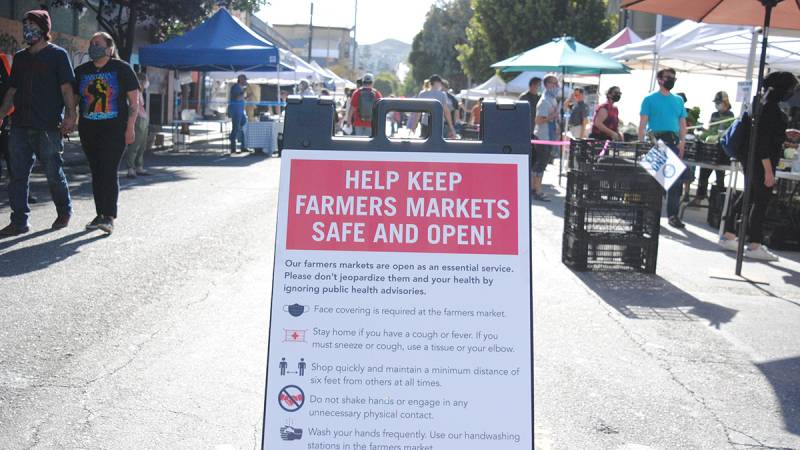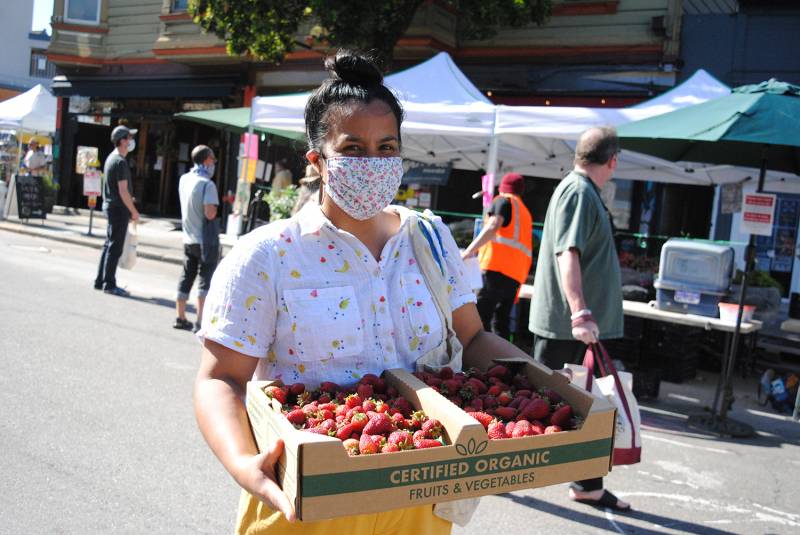CUESA’s farmer’s markets are no strangers to protests. San Francisco's Ferry Building has often served as the beginning or endpoint for many demonstrations, says executive director Christine Farren. “We’ve never had public outcries or demonstrations turn violent in our farmer’s markets,” she says.
In light of the protests sweeping the Bay Area and the country in response to the killing of George Floyd, the organization recently held a meeting to discuss whether or not to keep its markets open. One of the biggest concerns was the Mission Community Market, because it’s held at a later time than the Saturday Ferry Building location.

Ultimately, CUESA decided to remain open, but with limited hours. “It’s very important to stay open,” says operations manager Andrea Akers. “We are essential to folks in the neighborhood, and it’s mostly people of color. It’s a great resource to the local community and POC in the neighborhood. Being a black woman myself, it’s great to support them.”
She added that with the coronavirus pandemic, many people are trying to stay in their local neighborhoods and are avoiding public transit. That makes it difficult for people in the Mission District to get to different markets, like the Ferry Building. Farmers, even at the Civic Center farmer’s market, haven’t seen any problems from the protests. “It gave me hope hearing from other farmers,” says Akers.
All sellers were called and told that they weren’t obligated to attend. Since Wednesday, no sellers have canceled their spot at the market. These spaces or farmers and sellers are providing a much-needed place for income to make rent, says Farren. Farmers plan out their harvests long before these markets. They harvest ahead of time, and for a market to get canceled or for them to not go to a farmer’s market puts a dent in their livelihood, says Akers. Otherwise, their harvest goes to waste.

